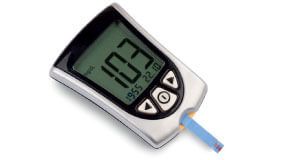Weight and Type 2 Diabetes

What is overweight and obesity?
Overweight and obesity are terms to describe high body weight and body fat. Overweight and obesity can be measured by the Body Mass Index (BMI) which is a calculation based on weight in relation to height.
Waist circumference is also important as it tells us how much fat is around our internal organs. The fat around our internal organs, known as ‘visceral fat’, can be harmful to health if our bodies have a lot of it. Visceral fat releases harmful chemicals and hormones into our bloodstream which can damage cells. This is why visceral fat is referred to as “toxic fat”.
Living with overweight, obesity, or higher waist circumference increases the risk of developing chronic diseases including some cancers, cardiovascular disease, and type 2 diabetes. It also increases the risk of developing other health issues, including high blood pressure, gall bladder disease, fertility problems, lower back pain and sleep apnoea. The more excess weight or fat a person is carrying, the higher their risk of health issues.
What is type 2 diabetes?
Type 2 diabetes is a condition where your body’s cells don’t take up glucose (sugar) as well as they should. Glucose is needed by cells for energy and to carry out their functions in the body.
Insulin is a hormone made in the body by the pancreas and acts on your body’s cells to allow glucose to get from the bloodstream into cells. In type 2 diabetes, cells are less responsive to the action of insulin or “insulin resistant”. This means that cells are not able to take up as much glucose as they need, and there is too much sugar left behind in the bloodstream.
Over time, this high blood sugar levels can damage the body’s organs and can lead to cardiovascular disease and problems with kidneys, eyes, feet and nerves.
Type 1 diabetes is a condition in which the pancreas cannot produce any insulin. It has a different cause and treatment than type 2 diabetes, although treatments for the two conditions may overlap.
What causes type 2 diabetes?
Although there is no direct causal link for type 2 diabetes, the following factors increase your risk:
- A high BMI, particularly when body fat is predominantly stored around the waist
- Poor diet
- Physical inactivity
- Smoking
- High blood pressure
- Low HDL-cholesterol (good cholesterol) or high triglycerides (fats)
In addition to these, genetics and age are contributing risk factors we can’t control.
For further information regarding causes and management of diabetes, see the Diabetes Australia website.
How does overweight and obesity increase the risk of type 2 diabetes?
For individuals carrying excess body fat, particularly if it’s stored around the waist and vital organs, the risk of developing type 2 diabetes increases.
Excess body fat acts as a barrier to insulin, which contributes to “insulin resistance” and high blood sugar levels. This causes the pancreas to increase insulin levels in the blood so more is available to control sugar levels. However, the pancreas can only increase insulin levels for so long before it becomes worn out, leading to less insulin output and higher blood sugar levels.

What can I do to reduce my risk of type 2 diabetes?
The best things you can do to achieve or maintain a healthy body weight to reduce the risk of type 2 diabetes are to eat a variety of healthy foods based on the Australian Dietary Guidelines, and to participate in exercise or physical activity every day.
These things will improve your health and reduce your risk of type 2 diabetes, whether or not your weight or waist circumference changes.
For personalised advice, we encourage you to see your local GP who may refer you to an Accredited Practising Dietitian. If you’re after more information, useful websites include Eat for Health, Heart Foundation, Cancer Council and Diabetes Australia.
